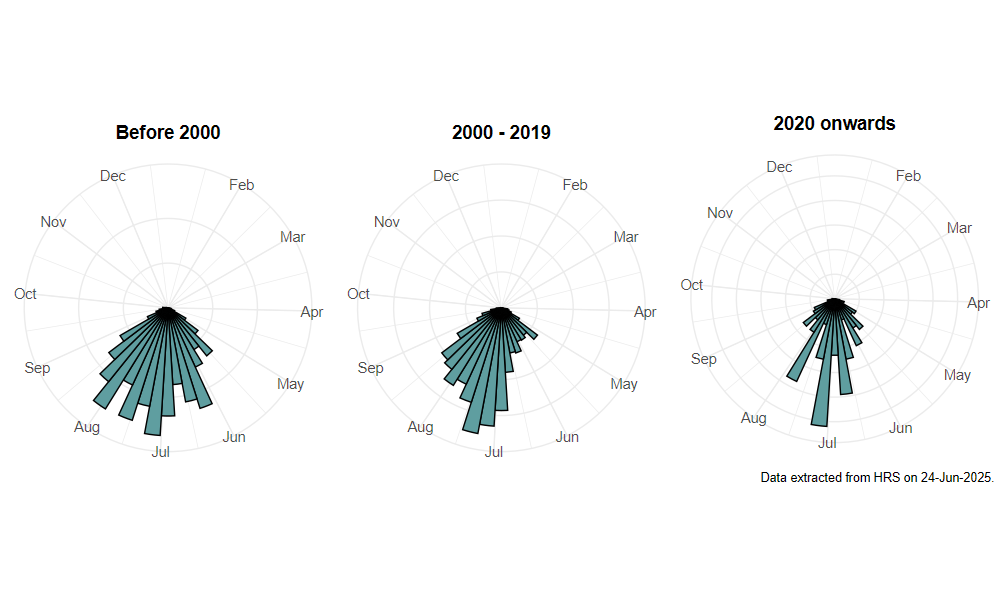Sphaerophoria interrupta (Fabricius, 1805)
Identification
Identification difficulty = 3. ![]()
![]() according to Ball & Morris, 20241
according to Ball & Morris, 20241
Synonymy
Sphaerophoria menthastri (Linnaeus) sensu Vockeroth in Stubbs & Falk (1983)2.
Biology
The larva feeds on aphids and other small, soft-bodied Homoptera in the ground layer, and have been found with aphids on White Campion Silene dioica and Common Mouse-ear Cerastium fontanum ssp. holosteoides (Stubbs, 1996)3. It is typically found in open, wet or moist grassland such as the edges of fen, coastal dunes, and unimproved wet meadows, but it also occurs in damp grassy woodland clearings. Occasionally recorded from chalk grassland. Adults fly low amongst the vegetation and visit a wide range of flowers.
Flight period
The following plots show the number of unique records per week excluding those reported to be of immature stages.

Distribution
After S. scripta, this is the commonest member of the genus. It is distributed into northern Scotland and is more likely to be encountered in northern areas than S. scripta. Its distribution is patchy, however, with much lower occurrence in eastern England and areas such as mid-Wales and the southern highlands of Scotland.

Trends
The following plots show the Frescalo TFactor vs year and a map of the rescaled frequency (all records) for the species.
-
Ball, S., & Morris, R. (2024). Hoverflies of Britain and Ireland. WILDGuides (3rd ed.). Oxford: Princeton University Press. ↩
-
Stubbs, A., & Falk, S. (1983). British Hoverflies: An Illustrated Identification Guide (1st ed.). Reading: BENHS. ↩
-
Stubbs, A. (1996). British Hoverflies. Second (revised and enlarged) supplement. Reading: BENHS. ↩